Papers by Raymond Opdenakker
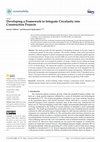
Sustainability
This study provides the first approach to integrating circularity in the early stages of a constr... more This study provides the first approach to integrating circularity in the early stages of a construction project by the project manager. The circular ambition of the Dutch government stimulates a different approach in project management compared to a traditionally applied approach in construction projects. Design science research (DSR) was used to develop a framework for project managers to integrate circularity in the initial phases of construction projects, and we divided this research into three steps: (1) investigate the problem, (2) design a solution and (3) validate the design. The performed design cycle and formulated design propositions resulted in a framework consisting of two A3 format pages. The framework explains a successful three-step approach: knowledge of circular economy in the construction sector is needed, circularity has to be integrated into the project preparation, and circularity has to be integrated into project management. Furthermore, the framework incorpora...

Future of Business and Finance, 2019
Collaborating in virtual teams is a new reality in modern project management and work environment... more Collaborating in virtual teams is a new reality in modern project management and work environments. Its emergence calls for an extensive analysis and re-alignment on the part of organizations, so as to help virtual teams maintain 'strategic momentum' – a concept that this book introduces. Strategic momentum represents perseverance with regard to pursuing a virtual team’s strategy; a 'flywheel' concept that drives the team members to concentrate on the project tasks until they have reached their shared goal. The authors present a design science based model, together with an in-depth qualitative study involving eight virtual R&D project teams. In this model, strategic momentum is assessed in terms of empowerment, team task insight, and collective commitment. These three determinants can be promoted and sustained by various contextual factors and interventions on the part of the management. The authors also provide a wealth of practical tips to help practitioners and consultants generate and sustain strategic momentum in their own contexts when working with virtual teams.
Open innovation can take place on several levels. In this paper we will look at the virtual R&D p... more Open innovation can take place on several levels. In this paper we will look at the virtual R&D project team level, especially at the 'fuzzy front end' of open innovation. We conducted qualitative research with six case studies of virtual R&D project teams, consisting of partners all over Europe. We found that most partners were intrinsically motivated for the virtual R&D project team because they were interested in the content of the project. These partners were already involved in research concerning the topic internally in the organisation. By collaboration in a virtual R&D project team they were able to put this research on a higher level. We also found that concerning the forming of the network, i.e. the virtual R&D project team, is that most partners are acquainted to each other, or are 'acquaintances of acquaintances'
Effective Virtual Project Teams, 2019
Open innovation can take place on several levels. In this paper we will look at the virtual R&D p... more Open innovation can take place on several levels. In this paper we will look at the virtual R&D project team level, especially at the ‘fuzzy front end’ of open innovation. We conducted qualitative research with six case studies of virtual R&D project teams, consisting of partners all over Europe. We found that most partners were intrinsically motivated for the virtual R&D project team because they were interested in the content of the project. These partners were already involved in research concerning the topic internally in the organisation. By collaboration in a virtual R&D project team they were able to put this research on a higher level. We also found that concerning the forming of the network, i.e. the virtual R&D project team, is that most partners are acquainted to each other, or are ‘acquaintances of acquaintances’.
Effective Virtual Project Teams, 2019
In this chapter, we will pay attention to the sixth step of the Design Science Research Cycle, th... more In this chapter, we will pay attention to the sixth step of the Design Science Research Cycle, the formulation of grounded general design propositions. To generate these design propositions, we will first present the cross-case analysis, the analysis that compares all eight cases, for which within-case analyses were elaborated in Chap. 4. Here, we will analyse the variables (team task insight, empowerment, and collective commitment) that probably have an influence on generating and sustaining strategic momentum. We will also analyse the variables (i.e. starting conditions and management interventions) that affect the creation and sustaining of team task insight, empowerment, and collective commitment. We will use crisp set qualitative comparative analysis (csQCA) to conduct the analyses.
International Journal of Construction Management, 2021
Face-to-face interviews have long been the dominant interview technique in the field of qualitati... more Face-to-face interviews have long been the dominant interview technique in the field of qualitative research. In the last two decades, telephone interviewing became more and more common. Due to the explosive growth of new communication forms, such as computer mediated communication (for example e-mail and chat boxes), other interview techniques can be introduced and used within the field of qualitative research. For a study in the domain of virtual teams, I used various communication possibilities to interview informants as well as face-to-face interviews. In this article a comparison will be made concerning the advantages and disadvantages of face-to-face, telephone, e-mail and MSN messenger interviews. By including telephone and MSN messenger interviews in the comparison, the scope of this article is broader than the article of BAMPTON and COWTON (2002).
Effective Virtual Project Teams, 2019
In Chap. 5, attention was paid to the sixth step of the Design Science Research Cycle, the formul... more In Chap. 5, attention was paid to the sixth step of the Design Science Research Cycle, the formulation of grounded general design propositions. In this chapter, we can see how these grounded general design propositions, like other information derived from the former chapters, can be used in practice to create an effective virtual project team, given the team’s starting conditions.
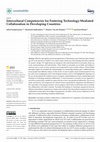
Sustainability, 2021
With the rapid global spread and application of Information and Communication Technology (ICT), t... more With the rapid global spread and application of Information and Communication Technology (ICT), the question is whether every culture makes similar use of the ideology that often underlies its creators’ design. ICT applications are designed with underlying beliefs or principles about e.g., work, communication, and individuality. These beliefs or principles are invisible and hidden in software and, as such, in many instances not recognized by users in other cultures. These hidden principles might even frustrate the understanding, use, knowledge-sharing, and e-collaboration between people from different cultures. In this article, we aim to explore, from a historical point of view, the early years of adaptation of ICT in developing countries, and we will highlight the importance of the use of intercultural (ICT-)skills to learn to recognize cultural differences from a relationship-based definition in technology-mediated collaboration. A semi-systematic or narrative review approach is u...
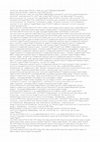
Journal of Property Investment & Finance, 2019
Purpose The transaction process of an office building is known to be time consuming and inefficie... more Purpose The transaction process of an office building is known to be time consuming and inefficient, in part due to the lack of market transparency. The purpose of this paper is to focus on the development of a blockchain application that can improve the transaction process of office buildings in the Netherlands. Design/methodology/approach Conducting design science research, the current transaction process of an office building and status quo of blockchain technology in real estate is investigated. Subsequently, multiple parties are interviewed to define major pain points within the process. The interview findings are used to design a blockchain solution which overcomes the aforementioned pain points. After designing, the interviewees are asked again to pragmatically validate the proposed model. Findings One of the major pain points identified concerning the transaction process of an office building is that it is difficult to define the characteristics of a property, due to lack of...

Effective Virtual Project Teams, 2019
In this chapter, we will present the results of the data collection, also conducted in step 5 of ... more In this chapter, we will present the results of the data collection, also conducted in step 5 of the Design Science Research Cycle. Therefore, we will first present the project structure of each of eight cases. Then, we will present the within-case analysis of these eight case studies. We will investigate how people have achieved an effective team and the amount of strategic momentum that has been created, whether momentum effects can be found in the cases, the extent to which the team task insight, empowerment, and collective commitment lead to the perseverance of the virtual project team strategy, the extent to which interventions and starting conditions lead to the development and sustaining of strategic momentum, and so on. The presentation of each case study ends with a visualisation of the developing and sustaining of strategic momentum over time and a short summary.
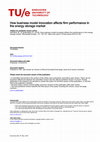
Renewable Energy, 2019
DOI to the publisher's website. • The final author version and the galley proof are versions of t... more DOI to the publisher's website. • The final author version and the galley proof are versions of the publication after peer review. • The final published version features the final layout of the paper including the volume, issue and page numbers. Link to publication General rights Copyright and moral rights for the publications made accessible in the public portal are retained by the authors and/or other copyright owners and it is a condition of accessing publications that users recognise and abide by the legal requirements associated with these rights. • Users may download and print one copy of any publication from the public portal for the purpose of private study or research. • You may not further distribute the material or use it for any profit-making activity or commercial gain • You may freely distribute the URL identifying the publication in the public portal. If the publication is distributed under the terms of Article 25fa of the Dutch Copyright Act, indicated by the "Taverne" license above, please follow below link for the End User Agreement:




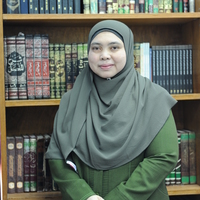

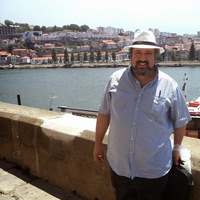


Uploads
Papers by Raymond Opdenakker